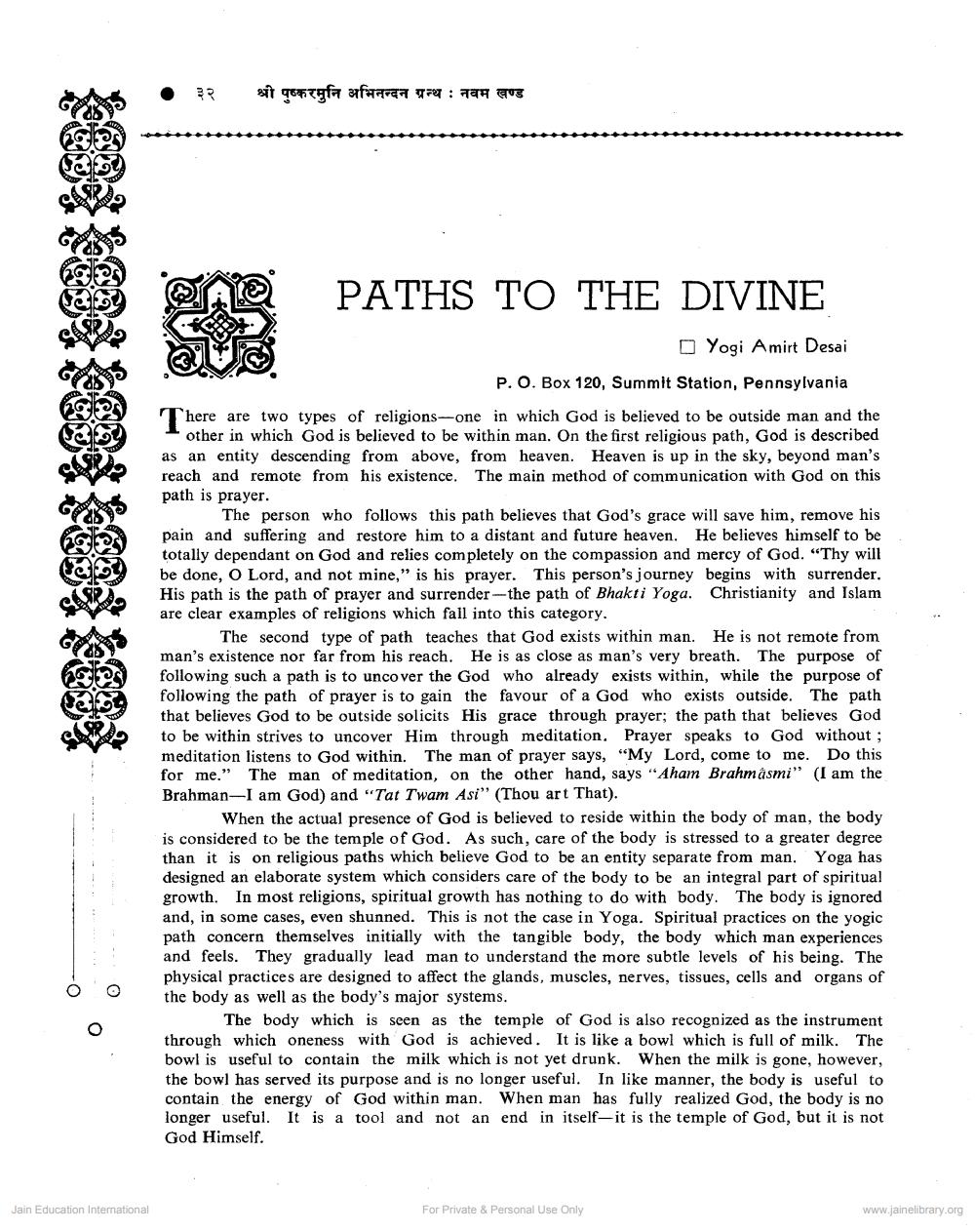________________
Jain Education International
३२
श्री पुष्कर मुनि अभिनन्दन ग्रन्थ : नवम खण्ड
PATHS TO THE DIVINE
Yogi Amirt Desai
P. O. Box 120, Summit Station, Pennsylvania
There are two types of religions-one in which God is believed to be outside man and the other in which God is believed to be within man. On the first religious path, God is described as an entity descending from above, from heaven. Heaven is up in the sky, beyond man's reach and remote from his existence. The main method of communication with God on this path is prayer.
The person who follows this path believes that God's grace will save him, remove his pain and suffering and restore him to a distant and future heaven. He believes himself to be totally dependant on God and relies completely on the compassion and mercy of God. "Thy will be done, O Lord, and not mine," is his prayer. This person's journey begins with surrender. His path is the path of prayer and surrender-the path of Bhakti Yoga. Christianity and Islam are clear examples of religions which fall into this category.
The second type of path teaches that God exists within man. He is not remote from man's existence nor far from his reach. He is as close as man's very breath. The purpose of following such a path is to uncover the God who already exists within, while the purpose of following the path of prayer is to gain the favour of a God who exists outside. The path that believes God to be outside solicits His grace through prayer; the path that believes God to be within strives to uncover Him through meditation. Prayer speaks to God without ; meditation listens to God within. The man of prayer says, "My Lord, come to me. Do this for me." The man of meditation, on the other hand, says "Aham Brahmasmi" (I am the Brahman-I am God) and "Tat Twam Asi" (Thou art That).
When the actual presence of God is believed to reside within the body of man, the body is considered to be the temple of God. As such, care of the body is stressed to a greater degree than it is on religious paths which believe God to be an entity separate from man. Yoga has designed an elaborate system which considers care of the body to be an integral part of spiritual growth. In most religions, spiritual growth has nothing to do with body. The body is ignored and, in some cases, even shunned. This is not the case in Yoga. Spiritual practices on the yogic path concern themselves initially with the tangible body, the body which man experiences and feels. They gradually lead man to understand the more subtle levels of his being. The physical practices are designed to affect the glands, muscles, nerves, tissues, cells and organs of the body as well as the body's major systems.
The body which is seen as the temple of God is also recognized as the instrument through which oneness with God is achieved. It is like a bowl which is full of milk. The bowl is useful to contain the milk which is not yet drunk. When the milk is gone, however, the bowl has served its purpose and is no longer useful. In like manner, the body is useful to contain the energy of God within man. When man has fully realized God, the body is no longer useful. It is a tool and not an end in itself-it is the temple of God, but it is not God Himself.
For Private & Personal Use Only
www.jainelibrary.org




